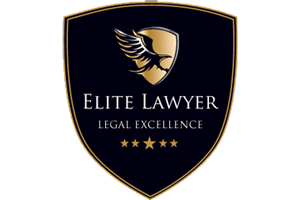- Free Consultation: (213) 251-5533 Tap Here to Call Us
Forced to Quit? Understanding Constructive Discharge in California

Constructive discharge, also referred to as constructive termination, occurs when an employee resigns due to working conditions so intolerable that a reasonable person in the employee’s position would have felt compelled to resign. Under California law, a resignation under such conditions may be treated as an involuntary termination, allowing the employee to pursue legal claims for wrongful termination or violations of public policy.
California courts recognize that while at-will employment permits termination without cause, employers may not unlawfully force employees to resign by creating or allowing intolerable working conditions. Constructive discharge is actionable only if the employer’s conduct violates public policy, such as discrimination, harassment, retaliation, or other violations of statutory rights.
In Turner v. Anheuser-Busch, Inc. (1994) 7 Cal.4th 1238, the California Supreme Court clarified that an employee must show that the employer either intentionally created or knowingly permitted the intolerable working conditions and that a reasonable person would find the conditions objectively intolerable. Minor workplace disputes, personality conflicts, or dissatisfaction with job duties generally do not rise to the level of constructive discharge.
Actionable Example
A female employee is subjected to ongoing sexual harassment by a supervisor, including inappropriate touching and explicit comments. Despite multiple complaints to Human Resources, the employer fails to take corrective action. She resigns due to emotional distress and fear of further abuse.
This scenario constitutes constructive discharge because it involves a violation of public policy—specifically, the right to a workplace free from sexual harassment under the Fair Employment and Housing Act (FEHA), Gov. Code § 12940(j). See Cloud v. Casey (1999) 76 Cal.App.4th 895, where the court held that persistent harassment culminating in resignation can support a claim for constructive discharge and related FEHA violations.
Non-Actionable Example
An employee is assigned a heavy workload, is frequently criticized by a demanding supervisor, and is required to work overtime, though still within lawful limits. The employee finds the work environment stressful and resigns.
This situation is not likely to constitute constructive discharge under California law. While the conditions may be unpleasant, they do not violate any fundamental public policy or statute. As the court held in Turner, supra, “the conditions giving rise to the resignation must be sufficiently extraordinary and egregious to overcome the normal motivation of a competent, diligent, and reasonable employee to remain on the job.”
What Employees Must Do to Support a Constructive Discharge Claim
To maximize the chances of succeeding in a constructive discharge lawsuit, employees should take the following steps before resigning:
- Document the Working Conditions: Keep detailed, dated records of events, incidents, and communications that contribute to the intolerable environment, including emails, witness names, and complaint reports.
- Make an Internal Complaint: Report the intolerable conditions to HR or a supervisor, in writing if possible. Courts often look to whether the employer was given a chance to remedy the situation.
- Give the Employer a Reasonable Opportunity to Cure: Allow the employer a fair chance to address the issues. Immediate resignation without notice can weaken the claim unless the situation is extreme.
- Consult an Employment Attorney: Before quitting, obtain legal advice regarding whether your situation qualifies under California’s legal standard for constructive discharge.
- Resign With a Statement of Reason: Provide a written resignation letter explaining that you are resigning due to intolerable working conditions. This can serve as contemporaneous evidence supporting your claim.
Constructive discharge is not easy to prove. California courts apply an objective “reasonable person” standard and expect strong factual support. Emotional reactions alone are insufficient unless tied to egregious conduct that breaches public policy or statutory protections.
Legal Disclaimer: This article is for informational purposes only and does not constitute legal advice. Every employment situation is unique. Employees considering resignation due to intolerable working conditions should consult an experienced employment attorney to evaluate their rights and potential remedies under California law.








